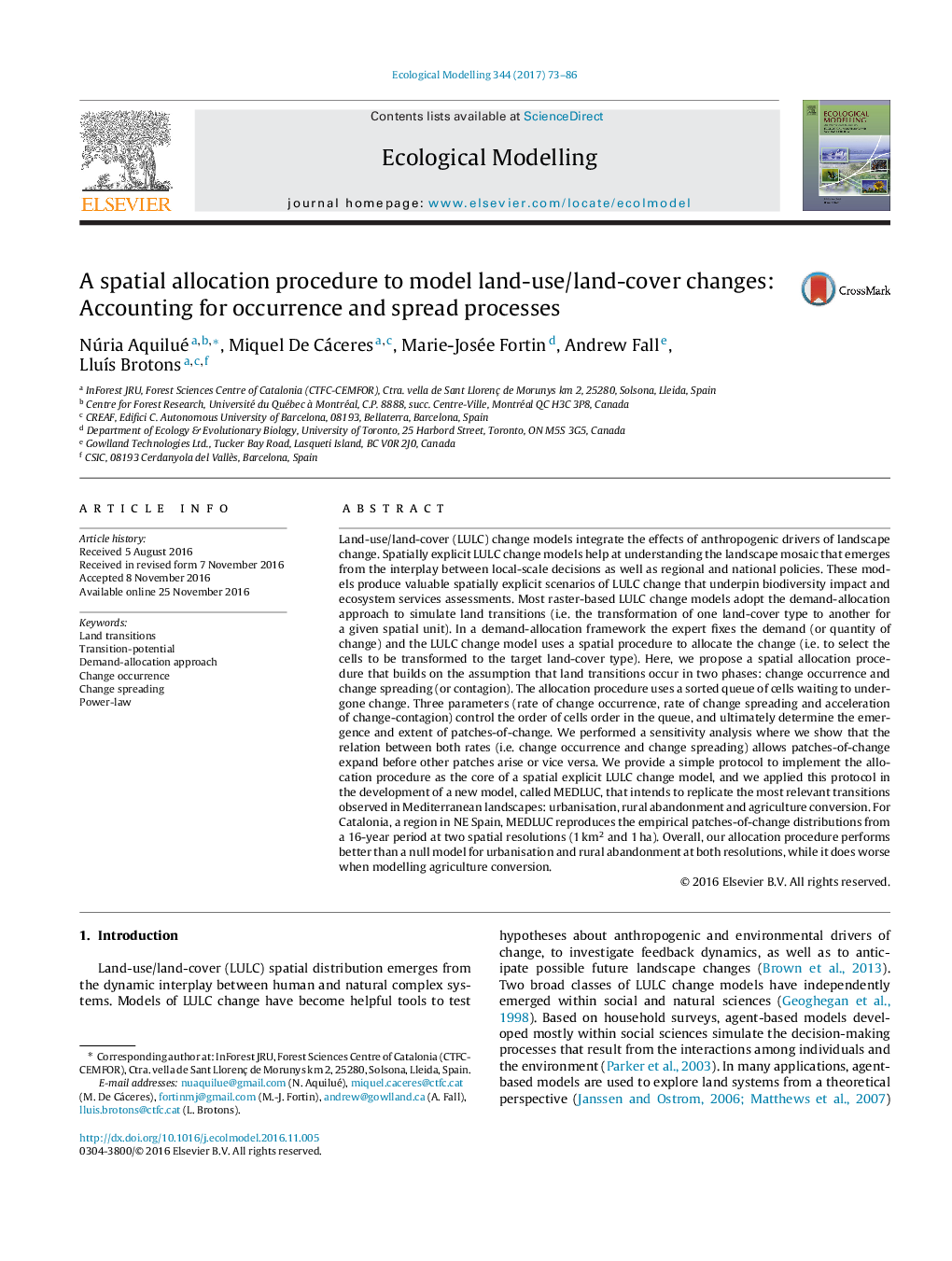| Article ID | Journal | Published Year | Pages | File Type |
|---|---|---|---|---|
| 5742281 | Ecological Modelling | 2017 | 14 Pages |
â¢A land-cover transition is split in two phases: change occurrence and spreading.â¢The proposed spatial allocation procedure can simulate any land-use/-cover change.â¢The MEDLUC model reproduces empirical patch-of-change distributions at two scales.â¢The model performs better than a null model for urbanisation and rural abandonment.â¢A demand-allocation modelling approach allows spatialize land-use change storylines.
Land-use/land-cover (LULC) change models integrate the effects of anthropogenic drivers of landscape change. Spatially explicit LULC change models help at understanding the landscape mosaic that emerges from the interplay between local-scale decisions as well as regional and national policies. These models produce valuable spatially explicit scenarios of LULC change that underpin biodiversity impact and ecosystem services assessments. Most raster-based LULC change models adopt the demand-allocation approach to simulate land transitions (i.e. the transformation of one land-cover type to another for a given spatial unit). In a demand-allocation framework the expert fixes the demand (or quantity of change) and the LULC change model uses a spatial procedure to allocate the change (i.e. to select the cells to be transformed to the target land-cover type). Here, we propose a spatial allocation procedure that builds on the assumption that land transitions occur in two phases: change occurrence and change spreading (or contagion). The allocation procedure uses a sorted queue of cells waiting to undergone change. Three parameters (rate of change occurrence, rate of change spreading and acceleration of change-contagion) control the order of cells order in the queue, and ultimately determine the emergence and extent of patches-of-change. We performed a sensitivity analysis where we show that the relation between both rates (i.e. change occurrence and change spreading) allows patches-of-change expand before other patches arise or vice versa. We provide a simple protocol to implement the allocation procedure as the core of a spatial explicit LULC change model, and we applied this protocol in the development of a new model, called MEDLUC, that intends to replicate the most relevant transitions observed in Mediterranean landscapes: urbanisation, rural abandonment and agriculture conversion. For Catalonia, a region in NE Spain, MEDLUC reproduces the empirical patches-of-change distributions from a 16-year period at two spatial resolutions (1Â km2 and 1Â ha). Overall, our allocation procedure performs better than a null model for urbanisation and rural abandonment at both resolutions, while it does worse when modelling agriculture conversion.
